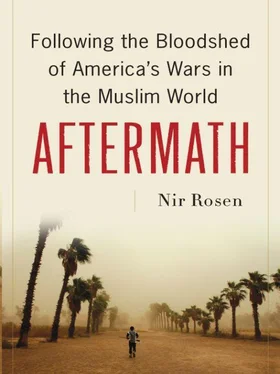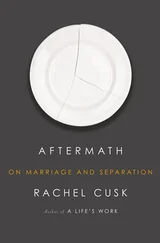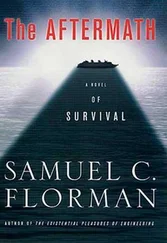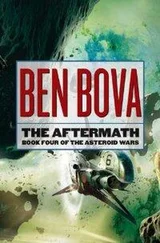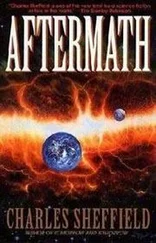I visited the Mustafa Husseiniya the day after the raid. I arranged to meet an old friend Firas from Shaab who was a friend of Sheikh Safaa al-Tamimi of the Mustafa Husseiniya. We drove into Shaab and into a long convoy of Mahdi Army pickup trucks and minibuses waving flags and machine guns. Shaab had deteriorated since my previous trip a few months earlier. After the recent Samarra explosions, three Sunni mosques in Shaab had been burned. The siege there was palpable. There were several hundred Mahdi Army fighters, and among the convoy were also blue-and-white Iraqi police pickup trucks. After we passed a police checkpoint, a white civilian car began to follow us. My driver gestured with his head at the rearview mirror to let me know. Suddenly he made a U-turn and squeezed into traffic going in the opposite direction, losing them. We met Firas on the side of the road far from the husseiniya . He would act as if he did not know me when we met at the mosque because it could be dangerous for him if people in Shaab knew he had foreign friends. He was himself a journalist and a close confidant of Sheikh Safaa, and had asked the sheikh to guarantee my safety. He wore a black suit and dark shirt with no tie and leather shoes. He had an informal intelligence-gathering capacity in the neighborhood.
Three years earlier I had shared with Firas the thousands of Baathist security files I found in the abandoned and looted general security office. These files contained the day-to-day operations of Saddam’s dictatorship and revealed the names of Baathist collaborators and spies. I felt that they were Iraqi patrimony and that I should hand them over to some Iraqi movement. Firas gave them all to the Tawhid association, and I never got them back. I now know from other friends that my files were used to compile hit lists by Shiite militias in Shaab and that Firas was involved in this. I never asked him directly. He had told Sheikh Safaa about me, and the sheikh was expecting me, but Firas warned me once more to pretend I didn’t know him.
It was immediately apparent that the raid had targeted the husseiniya , which strictly speaking was not a mosque but had the same function as one and even had a minaret with loud speakers on its top to broadcast the calls to prayer. Moreover, the husseiniya was not located in the Adhamiya neighborhood, contrary to the coalition press statement. Adhamiya is a Sunni bastion not far from Shaab, but the two neighborhoods are worlds apart. Could the Americans have confused the most heavily Sunni neighborhood in Baghdad with a Shiite stronghold? Could they have confused Muqtada’s Shiite militia with a terrorist cell? Before the war the Mustafa Husseiniya had been a Baath Party office. Like other political movements, Muqtada’s had seized many Baath Party buildings following the war. Some former Baath Party buildings even had domes now.
A large sign in front of the Mustafa Husseiniya bore the faces of Muqtada’s father and local Mahdi Army martyrs. Black banners hung on the wall with Arabic letters in white, red, green, and yellow. “We express condolences to the Mahdi and the whole Islamic nation for the disaster of the martyrdom of the brother believers and the attacks on them in the Mustafa Husseiniya at the hands of the takfiris backed by the occupation forces.” Other banners echoed this: “The massacre of the Mustafa Husseiniya was done by the Wahhabis with the help of the Americans.” Another said that the massacre had been committed by “the forces of darkness with the help of the forces of occupation.”
The large lot before the husseiniya was blocked off by concrete traffic barriers. A large black chadir (a round tent used for mourning) was erected in it. Big red-and-green flags waved from above it. Rows of plastic chairs were lined up, and several turbaned clerics sat talking. It was customary to enter on the right side and shake the hands of all present, wishing peace upon them one by one until the end. Then the visitor would sit down and ask God to have mercy on the one who would read the Fatiha, the first verse of the Koran. Then everyone would recite the Fatiha seated except for the relatives of the deceased, who would say it standing. Following the recital, the men would all wipe their hands down their faces.
A banner on one of the concrete barriers announced, “The followers of the family of the Prophet Muhammad understand this: the money of the Saudis and the hatred of the Americans and the ugliness and the barbarism of the Wahhabis and the cowardice of the political Shiite leaders equals the slaughter of the Shiites of Ali, the commander of the faithful.” Beside the banner was a picture of Ayatollah Sistani and Muhammad Sadiq al-Sadr. In front of the husseiniya was a small stand on which a pot of tea was boiling. I was offered a small glass of the very sweet and strong tea popular in Iraq, always poured into glasses that taper inward gracefully. Glasses were then rinsed in a bowl of water and reused. I was carrying a film camera with me but was warned not to film the many armed men who stood outside, slinging Kalashnikovs casually. The young men guarding the mosque welcomed me and gave me a tour of the wreckage. Firas was there too, and he introduced himself to me to maintain the charade.
They pointed to an exploded wall and a pile of rubble that had been the imam’s home (imams often live on the premises or in a house attached to the mosque). The men explained that an American Apache helicopter had fired a missile at it and destroyed it. They had collected all the shrapnel to prove it, along with numerous shell casings from American M-16s. Three blackened cars sat inside the courtyard. I was told they belonged to people praying in the mosque and had been parked outside but that the Americans had burned them and then dragged them inside the husseiniya . Against one wall was a large picture of Muhammad Sadiq al-Sadr and Sheikh Haitham al-Ansari, Shaab’s murdered cleric. I asked one of my guides, the caretaker Abul Hassan, who wore a black dishdasha with white trousers beneath it, why the Americans had come. “By God I don’t know,” he said. “We were surprised by their raid.” He attributed it to political pressure on the Sadr movement.
Brownish red blood smeared the courtyard, where bodies had been dragged. “They killed people praying, innocent people,” the caretaker said. “One of the people praying was shot here,” he pointed, “and dragged all the way here.” He pointed to a room, “and one was shot here.” He showed me dried pools of blood and pointed to the ceiling, where blood and pieces of flesh had splattered from somebody’s head. “They brought four here—one of them was fourteen.” He gestured to another room: “There were five martyrs in that room.” The men were just as concerned with the posters, which had been cut or torn. Adjacent to the husseiniya were several rooms that had been given to the Dawa Party-Iraq organization. This was not Prime Minister Jaafari’s party but a rival branch (there are three), which had been exiled in Iran. Inside the offices, blood covered plastic chairs and the floor. Political posters covered the walls featuring the first and second Sadr martyrs. “Here they killed one,” my guides told me, pointing to more blood. They showed me the jinsiya (ID cards) of the three martyrs from the Dawa office. In one of the Dawa rooms they pointed out a vast pool of blood with white pieces of brain stuck in it. The men pointed to more blood. “Torture, you understand? Torture,” one man told me. A book written by Muhamad Sadiq al-Sadr was covered in blood. A poster of Jaafari had black ink scribbled on his face. In the room where ceremonial drums and chains were stored, drums had been torn, pictures torn off.
Читать дальше
